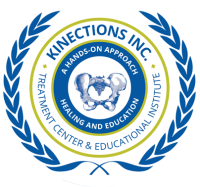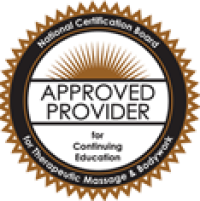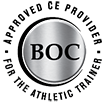Our Philosophy
Kinections Inc. Treatment Center & Educational Institute is a diverse group of manual therapy practitioners who strive to improve the health and wellbeing of patients by utilizing current scientific research. Our philosophies are based on current and past research in order to provide a valid rationale as to why we think our treatment methods will be successful. Our methods are based on science applied to therapeutic modalities that involve the application of accurately determined and specifically directed manual techniques.
With treatment, we strive to normalize the abnormal physiology that is present in the body and to return it to a state of dynamic equilibrium to lessen each patient’s symptoms. While decreasing a patient’s pain is a common goal of treatment, our methodology is not pain-based.
The objective of treatment is to improve mobility in the areas that have limitations, regardless of causation, and restore normalcy. Therefore, treatment needs to be individualized to the specific need of each patient.
We believe that normalizing physiology is well within our reach, but fixing a problem that has gone beyond abnormal physiology to a pathological state is beyond our realm of care. We do not treat disease, but we can treat the side effects of it.
To achieve our goals of treatment in a wide variety of patient populations, we believe there has to be an understanding of the complexities of human embryology, anatomy, physiology, and pathology.
Understanding and mastering complexities of the human body is difficult and requires many years of ongoing education. This treatment approach is not a simple one. We do not think successful treatments can be provided by treating everyone in the same manner. Each person has a different genetic makeup, different conditions in which they live, different past medical and injury histories, and different levels of stress resulting in different current physiological states.
If you are a practitioner interested in learning the methods followed by the staff at Kinections Inc., and are willing to put in the time to learn the intricacies of our methods, we believe the satisfaction and economic reward of having a successful practice will be well worth your time and energy. While the journey to reach a level of understanding that is necessary to provide a high quality of care may be difficult, the teaching staff at Kinections Inc. will lead you along the way. We understand that not everyone will have the same desire or means to take classes, which is why all of the courses are taught in such a way that the information can be used in a standalone manner to increase knowledge of a particular subject matter. The information learned in classes at Kinections Inc. can be immediately incorporated into your clinical practice or integrated with other classes that you may take later on. Different levels of mastery can be achieved. Our goal is to make you a better practitioner.
What Makes Us Different
We believe that there are several reasons why our philosophy of treatment is different than most other health care providers.
The Focus of Treatment Needs to be at the Cellular Level
Our principle goal of treatment is to normalize physiology, so we bring our focus down to the cellular level. We often ask questions such as:
Is the patient breathing well enough to take in adequate oxygen and remove carbon dioxide?
Can the oxygen travel in the blood easily to all the tissues?
Is the patient taking in adequate and appropriate nutrition to provide the proper building blocks for energy production and metabolism?
Is the patient adequately hydrated?
Are there any areas of lymphatic congestion that might affect the patient’s ability to remove metabolic and immune waste products?
Are the autonomic nervous system and hormonal system working in concert to send proper signals to and from the affected area?
Joint dysfunction, tissue injury, and myofascial restriction/scarring can affect all of these factors, with the end result being altered physiology and a decreased healing response.
Synactive Theory
In order to determine the proper course of treatment, many factors need to be considered, including the embryology, anatomy, physiology, biomechanics, neuromotor function, and pathology of the region being treated, in addition to the behavior and psychosocial status of the patient being treated. In other words, when deciding how to treat an area of the body the following needs to be known:
Where did the embryological tissue come from, and can it do what is it supposed to do?
What other structures are the embryological tissue physically connected to?
What other structures are the embryological tissue communicating with neurally and hormonally, and are there any overriding external factors that are limiting the body’s ability to function properly and/or heal?
The Body is Functionally Integrated
One of the ways health care is failing today is that too often the treatment approach is too narrow in focus or too specialized. The body does not work in isolation. All the systems of the body are interconnected with conversations constantly going on between them.
However, in the problems we see in clinical practice, these conversations can become faulty. For example, we may be seeing a problem in the right shoulder because the left hip is not working correctly, as they are connected along the oblique myofascial sling due to our reciprocal gait pattern. The occipitoatlantal joint may be constantly irritated because the talus in the ankle is dysfunctional, which is causing an adaptive reaction up the kinetic chain with each step. Gut motility may be slow because the right jugular foramen is jammed, which is causing a compression of the vagus nerve as it exits the foramen.
Basically, if clean signals aren’t being sent up and down the line—biomechanically, hormonally, and neurologically—body physiology changes, leading to the patient having symptoms.
The Autonomic Nervous System May Need to be Treated in Addition to the Biomechanics
Influencing the autonomic nervous system via manual therapy techniques is something that very few treatment approaches, if any, are doing. It is one of the things that truly makes Kinections Inc. unique. While manual therapy is an excellent tool to correct biomechanical lesions, having a purely biomechanical approach may not be enough to restore proper function. Even if proper function of the joints and myofascial structures are restored, true healing may not be complete if the sympathetic nervous system has converged at that segmental level. Circulation will be restricted after the precapillary sphincter, leading to less than optimal blood flow at the problem area, secondary to electrogradiant changes at that level. In addition, the function in a recurring biomechanical lesion may become completely restored if a viscerosomatic reflex is present. As an example, the patient may be having pain in the upper back because of a respiratory irritation causing facilitation in T2 and the second rib. This is why Kinection Inc.’s treatment approaches include a vast array of biomechanical approaches in addition to Francis Marion Pottenger, M.D.’s segmental viscerosomatic reflexes, Frank Chapman, D.O.’s neurolymphatic reflexes, and Terence Bennett, D.C.’s neurovascular reflexes.
Proper Healing Requires Good Circulation
It is a well-understood concept that an injured or dysfunctional part of the body cannot properly heal unless it has adequate blood flow. However, this simple statement does not fully express the complexity that makes this statement true. Healing requires adequate circulation from all components—arterial, venous, and lymphatic. Good arterial flow is needed to bring in oxygen and nutrients for repair while good venous and lymphatic flow is needed to clear the area of debris, metabolic and immune waste, and inflammatory chemicals. Therefore, a proper treatment approach needs to keep all of these factors in mind.
As stated earlier, the autonomic nervous system needs to be balanced so sympathetic facilitation does not cause vasoconstriction of the area. However, autonomic nervous system balance can only be attained if the thoracic cage, pelvis, and cranium are free of dysfunction. Good joint and tissue mobility also need to be obtained in the extremities to ensure adequate circulation in and out of them, and especially to maximize their drainage into the trunk. Good respiratory and pelvic diaphragm motion is needed to drain their respective regions and stimulate lymphatic flow through the thoracic duct into the subclavian vessels and back to the heart. Both clavicles and first ribs need to be moving well so the thoracic inlets do not become congested. And finally, there needs to be a good cranial rhythm to ensure proper circulation to and drainage of the head.
Immune Function
The most important thing to remember is that we only live as long as our immune system is functioning. Proper immune function should be enhanced by having a healthy lifestyle that includes proper nutrition, adequate exercise, good hydration, management of daily stress, and the avoidance of disease-promoting habits, like smoking. However, while other approaches stop there in regards to enhancing immune function thinking there isn’t anything else to do, Kinections Inc. does not. This is another area that makes Kinections Inc. unique. Improving immune function goes hand-in-hand with maintaining autonomic nervous system balance, enhancing function of the HPA axis, removing strain from around the spleen and long bones to promote the development of specific T lymphocytes, and maximizing lymphatic flow. All of these components of immune function can be improved with specific techniques that we teach through our classes.


